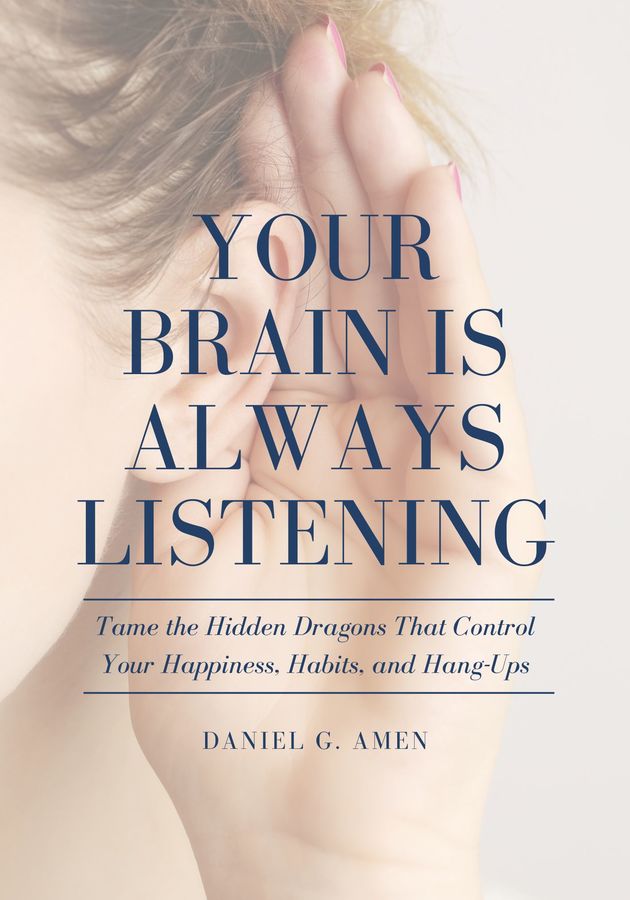Have you ever wished you could read people’s body language to know what they were really thinking? Are you interested in learning more about how the body protects and expresses itself? In “What Every BODY Is Saying: An Ex-FBI Agent’s Guide to Speed-Reading People” by Joe Navarro, you will learn that and more from an expert in nonverbal communication. So, get ready to learn all about how to tell what people are really thinking and feeling!
What is nonverbal communication?
As a former counterintelligence special agent specializing in nonverbal communications at the Federal Bureau of Investigation (FBI), Joe Navarro is uniquely positioned to literally write the book on this subject. As an exile from Cuba to the United States at just eight years old, Navarro came to learn about nonverbal communication and behavior while learning to speak English and getting to know and understand his schoolmates and teachers. At this early age, Navarro figured out how to navigate this new life just by reading subtle clues in people’s faces and bodies, even after he learned English. These became invaluable skills for him in his career with the FBI. Now, he shares what he’s learned from his many years of experience, and shows us how to see the world through his eyes: “as a vivid, dynamic environment where every human interaction resonates with information, and as an opportunity to use the silent language of the body to enrich your knowledge of what people are thinking, feeling, and intending to do.” Having and using these strategies will give you a great advantage in your daily interactions, and “give you previously hidden insight into human behavior.”
Navarro defines “nonverbal communication,” “nonverbal behavior” or “body language” as “a means of transmitting information,” that is just like speaking, but is understood through a variety of actions such as facial expressions, gestures, touching, physical movements, posture, clothes, jewelry, hairstyle, as well as the “tone, timbre, and volume” of someone’s voice. You may be surprised to learn that 60% to 65% of communication is nonverbal! So, having this information - also known as “tells” - can reveal a lot about what someone may be thinking, even if they are not consciously aware of their actions.
In this book, you will learn in detail more about what these behaviors are and how to spot them, so you can apply them in your own life and interactions, no matter what your field or interests. It takes time, but will get much easier with practice. As you progress, keep in mind the following guidelines:
- Be a competent observer of your environment.
- Observe in context to understand nonverbal behavior.
- Recognize and decode nonverbal behaviors that are universal, as well as idiosyncratic nonverbal behaviors.
- Establish someone’s baseline behaviors when you interact with them.
- Watch people for multiple tells - behaviors that occur in clusters or in succession.
- Look for changes in someone’s behavior that can signal changes in thoughts, emotions, interest, or intent.
- Detect false or misleading nonverbal signals.
- Distinguish between comfort and discomfort in order to focus on the most important behaviors for decoding nonverbal communications.
- Be subtle when observing people.
Limbic system
All of the “language” from specific parts of the body comes from the brain, or what is known as the limbic system. The brain controls all behavior, whether conscious or subconscious, and the limbic system specifically controls our survival mechanisms, our ability to deal with stress, as well as our ability to understand others. The cranial vault contains the part of the brain that controls involuntary actions (limbic brain), and the part that consciously thinks (neocortex). The difference, however, is that the limbic brain is “the most honest brain” in that it produces “the most significant nonverbal signals for determining true thoughts and feelings,” while the neocortex evaluates the “limbic reactions” of others to determine their true thoughts, feelings, and intentions. Additionally, even though someone can use their neocortex to say (sometimes convincingly) things that are not true, their limbic system never fails to reveal what is truly going on inside their brain. As Navarro puts it, “the limbic system is the holy grail of body language.”
You probably already know about the fight-or-flight response, and may even know about the freeze response as well. These survival behaviors, which we’ve inherited from our animal ancestors, are key to understanding how people respond to a stressful or threatening situation, much like our ancestors did to actual predators. They are very revealing because they are “hardwired” into the nervous system. Instead of thinking of just fight-or-flight, know that living things react to danger in this order: freeze, flight, fight. Understanding these three will go a long way towards helping you understand someone’s true internal state.
Freezing can range from a “deer-in-the-headlights” look when caught off guard to playing dead in an extremely dangerous situation, such as a shooting. When it comes to body language, people will often freeze, hold their breath or breathe shallowly when they are being questioned about something that they think could get them into trouble. Others will try to hide, which actually makes them even more noticeable. When freezing either doesn’t work or is not the best option due to the immediacy of the threat, the limbic system’s next response is flight. In the wild, this would mean running away, but in modern life, that means turning away or distancing ourselves, which shows discomfort. The last resort is to fight: instead of fighting off a predator, we do things now such as argue or even get into physical altercations.
The limbic system also “ensures our survival as a species” by helping us avoid danger or discomfort by looking for safety and comfort. It also uses what we’ve learned from past experiences to help us navigate in the world by responding to a negative or threatening situation with what are called pacifying behaviors. These are often subtle, but noticing them is key to understanding what someone is thinking and feeling: look for touching of the mouth, neck, or forehead, or rubbing their shoulders for a calming effect. Understanding why someone would engage in these behaviors, as well as how to spot them, is important in learning how to read their body language.
Reading body language: legs & torso
Various parts of the body present opportunities to read reactions generated from the limbic system. You may be surprised to hear that the legs and feet, not the face, are “the most honest part of the body - the part that is most likely to reveal a person’s true intentions.” This is because our legs and feet have traditionally been our primary means of reaction to threats and survival, so they communicate a great deal of information about what we’re thinking and feeling as we have evolved over the past several millions of years. Watch for motions such as “happy feet” (such as wiggling), shifting towards or away from something, knee clasping (a sign of wanting to leave), and toes pointing upward (happy mood). Crossing the legs is a sign of comfort, while uncrossing signals discomfort. Sudden changes in walking style or intensity in foot/leg movements are also a red flag and deserve further investigation. The pointing of the feet also reveals how someone is feeling. “Mirroring” the other person’s actions signals cooperation, while pointing away indicates wanting to be elsewhere. Understanding what the legs and feet can reveal will go a long way towards reading someone.
Similarly, the torso, hips, chest, and shoulders express what the limbic system is feeling. The brain wants to protect this area of our bodies since it contains some of our most vital organs, including the heart, lungs, liver, and digestive tract. So, the actions of the limbic system should be interpreted with this in mind. One big clue is looking at whether the torso is leaning towards or away from someone, signaling a person’s comfort level. Another mechanism, chest-shielding, involves crossing the arms to literally protect that area from attack. Splaying is a signal of dominance, while puffing up the chest or quick breathing is a sign of someone preparing for a fight. The shoulders can also offer clues: when someone shrugs, keep an eye on whether both shoulders rise; if only one does, chances are the person is not being entirely truthful. This is also true of the shoulders slowly rising to make the neck disappear, like a turtle. The torso is an important area to notice, as it is the “billboard” of the body, with all it is trying to protect, so it will have some of the most honest reactions.
Reading body language: arms & face
Since the arms have historically been used for our survival like the legs, they also offer insights into a person’s inner state. Typically, our arm movements reflect our level of excitement and happiness, so the lower someone’s arms are - look for drooping, restrained arms - the higher their level of distress or discomfort. Withdrawing the arms to our sides or across our chests is another “survival tactic.” Putting the arms behind the back is also a way to keep others distanced. We also tend to keep unpleasant things literally “at arm’s length.” Putting hands on hips (with thumb behind) is a sign of dominance, as is spreading the arms to occupy more space. Similarly, the way we clasp our hands can show signs of tension and discomfort. Depending on one’s culture, a certain level of gentle touching of the arm indicates comfort with someone, while no touching at all should also be considered a red flag, since human touch is such an important part of communication.
Finally, the face, or, “the mind’s canvas,” is hugely important in providing clues as to what someone is thinking. The difference to watch out for, however, is that we can often control and use our faces to deceive more than we can with the other parts of the body discussed here. So while facial expressions can still provide information, it’s important to watch for “clusters of behaviors” that seem to indicate similar feelings, such as tightening of the jaw, squinting, or furrowing the forehead. Looking at the eyes provides clues that a person can’t control - constricting of the pupils, for example, signals focus in order to defend oneself or escape. Blocking or tight closing of the eyes also indicates displeasure with what is taking place. The mouth also provides good information. Real smiles will force the corners of the mouth towards the equally happy eyes, while fake ones barely move the mouth and the eyes show no emotion. Compression or pursing of the lips is a sign of discomfort, and a defense mechanism. Flaring of the nostrils is also a sign of aggression. Also watch for blushing, which reflects a heightened emotional state, or paleness which reflects shock. Just remember that reading facial expressions can be tricky, so be sure to compare them to the other signals coming from the more revealing parts of the body.
Proceed with caution
The knowledge of body language is not a guarantee that you will always be able to spot a liar. Even with all of these nonverbal clues you’ve learned, detecting deception is still a very difficult, delicate task. Even some professionals misinterpret behaviors that end up making people feel more uncomfortable or worse. Even an expert like Navarro admits that he only has a 50-50 chance of getting it right! He explains, “There are no nonverbal behaviors that, in and of themselves, are clearly indicative of deception.” The behaviors Navarro has taught us are only a guide and a starting point, indicating further investigation and questioning may be necessary. Never call someone a liar without much more adequate observation and information.
There are some important tips to keep in mind when trying to read someone as accurately as possible. They include: getting a full, clear view of a person, expecting some pacifying behaviors and initial nervousness (that aren’t indicative of deception), making sure the person is as relaxed as possible before asking more stressful questions, establishing baseline behaviors, watching for an increased use of pacifying behaviors, pausing to give the person time while observing their behavior as opposed to pressuring them (which often forces false confessions), keeping the person focused, not believing that bigger talkers are more truthful and more reserved people are lying, and observing and identifying what is causing a person to exhibit stressful behaviors (certain “deceptive behaviors” reflect stress, not lying).
It’s also important to look for signs of synchrony and emphasis. Someone telling the truth will reflect what they are saying in their nonverbal behavior. Likewise, emphasis between words and actions indicates a level of truthfulness; people who are lying tend to focus on what they are saying verbally and not what their body is expressing nonverbally. Nonverbal behaviors won’t tell you everything, but they will give you some clues. Pull on those threads to learn more.
Final Notes
Once you have learned to look for these nonverbal behaviors in others (and even yourself!), you’ll wonder how you didn’t see them before. Though you must use this knowledge with caution, you now know how to hear and see both of the languages “that combine to present the full, rich tapestry of human experience in all its delightful complexity,” which will help enhance all of your interactions.
12min Tip
If you want to understand what someone is really thinking or feeling, learn to recognize nonverbal behaviors that can be much more revealing than words. These behaviors are universal and are dictated by the brain’s limbic system, which is designed to protect us.





























